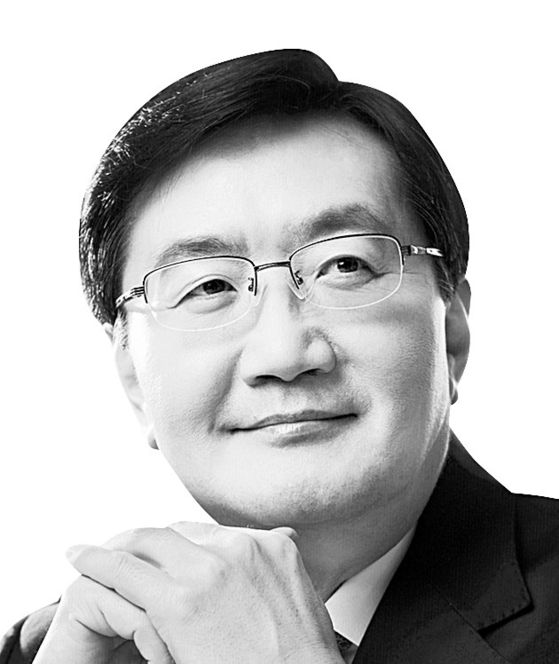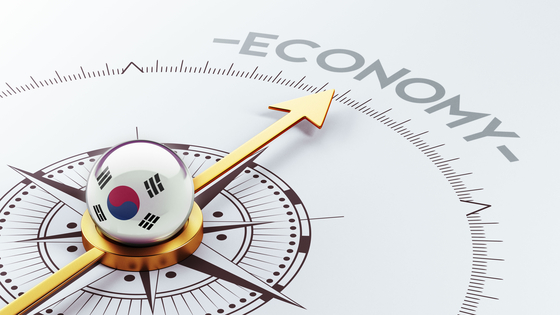[Column] The Korean economy at an inflection point
Published: 17 Jan. 2023, 20:20

Jun Kwang-woo
The author, a former chairman of the Financial Services Commission, is chairman of the Institute for Global Economics.
April 2023 could mark an inflection point in world history, at least on the demographic map. The United Nations estimates India will top China as the most populous country in 2023 with population passing the milestone of 1.4 billion at 1.428 billion while China’s peaks out at 1.426 billion. In 2050, China’s population is projected to fall below 1.3 billion while India’s passes 1.6 billion. The median age of India is estimated at 31, more than 10 years younger than China at 42, as well as the U.S. at 40 and South Korea at 50. The waning of working population could signal the weakening of China’s economic power.
The World Bank has cut global economic growth outlook to 1.7 percent for this year from earlier 3.0 percent. The growth would be the weakest in 30 years, except for the global financial crisis year of 2008-2009 and the Covid-19 pandemic year of 2020. The International Monetary Fund (IMF) has raised the alarm on a global recession, cautioning about the China risk. Given the sluggish real estate market, soaring national debts and structural problems like aging, the Chinese economy won’t be able to run at the past staggering pace and may have to settle for an annual growth in the 3 percent range for the next 10 years. Due to the consolidation of low growth, the Chinese contribution to global growth is expected to fall to the 20 percent range from 40 percent. Beijing’s sudden easing of draconian zero-Covid policy has fueled the geo-economic uncertainties. The prophesy that the pandemic could bring about a seismic change to the global order will likely become a reality.
The so-called “peak China” phenomenon is expected to have global repercussions. Joseph Nye, an emeritus professor and former dean of the Harvard Kennedy School of Government, recently listed several limitations of China in its hegemony contest with the United States.
First is geopolitics. The U.S. is surrounded by the Pacific and the Atlantic and has two friendly neighbors on the border — Canada and Mexico. China on the other hand shares borders with 14 countries and engaged in territorial disputes with many, including Japan, India and Vietnam. Second is energy. China is highly reliant on oil and coal imports, whereas the U.S. is self-sufficient on fuels after the shale revolution. Third is the influence in international finance. China hardly can rival America with its dollar supremacy. Fourth is demographics. A half of 15 major economies will be experiencing thinning in working population over the next five years. But U.S. population is expected to add 5 percent while China’s is projected to decline by 9 percent. Fifth is high-tech. China may be advancing fast in new technologies like semiconductors and artificial intelligence, but it won’t be able to outpace America.
India will be the biggest winner from the G2 conflict. According to the IMF, India is expected to exceed the UK, Germany and Japan in terms of GDP by 2027 to become the third largest economy. Despite a global recession, India’s growth this year is estimated to be in the 6 percent range, higher than China’s estimated 4 percent range. In its 2023 Global Investment Outlook, BlackRock proclaimed, “We’re in a new world order of geopolitical fragmentation.”

China’s slowdown will be damaging to South Korean economy. Korea’s trade balance has been in the red for the ninth straight months and the declining pace is getting worse. Shipments to China tumbled 27 percent on year in December, hurting Korea’s manufacturing activity broadly. Korea’s exports to China will likely fall 10 percent this year, too. Korea must pivot more aggressively towards India and Vietnam — which delivered the largest trade surplus for Korea last year — as well as toward other Asean member nations and the Middle East to expand its economic frontiers through diversified trade.
During a transitional period in global order, a country’s fate hinges on diplomatic and economic power. “If we get too close with the U.S., we may lose the Communist Party, and if we get too close with China, we may lose our country,” said a senior Vietnamese government official during my visit to Vietnam while I was working at the World Bank. His remarks reminded me of the importance of raising a country’s power while carefully keeping its balance. The Yoon Suk Yeol administration should reinforce its ties with the U.S. and strengthen its role in the Indo-Pacific Economic Framework. The country’s dichotomous reliance on the U.S. for security and China for economy no longer stands. However, just as it was dangerous to overestimate China, it would equally be dangerous to rush to underestimate the country. Although it may have passed the fast growth phase, China’s potential should not be ignored. Korea must build up economic and security capabilities to respond to the drastic changes in its external environment.
In the face of warnings of a “permacrisis,” the transitional period calls for structural reform to reassess and rebuild economic fundamentals. With little maneuvering room left in fiscal and monetary policymaking, policies like labor and regulatory reforms, which can stimulate private investment without causing inflation, are essential. Reforms in labor, education and pension are urgent to restore our growth potential. Aggressive implementation of such reforms depends on productive political environment and matured citizenship. Honing national competitiveness is the sole survival strategy in the changing global dynamics.
Translation by the Korea JoongAng Daily staff.










with the Korea JoongAng Daily
To write comments, please log in to one of the accounts.
Standards Board Policy (0/250자)